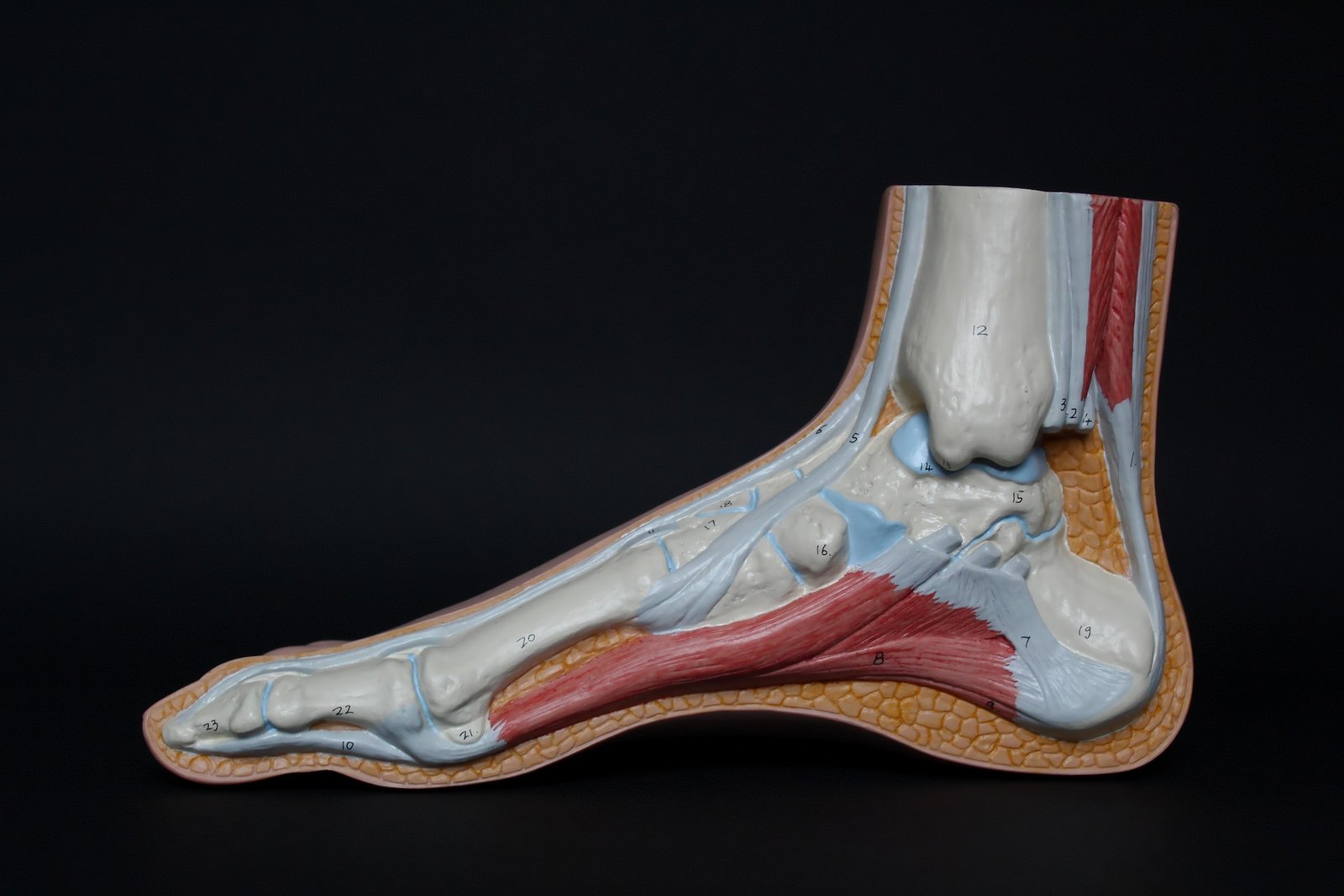Plantar fasciitis torn is a common foot condition that affects millions of people worldwide. It occurs when the plantar fascia, a thick band of tissue that connects the heel bone to the toes and supports the arch of the foot, becomes inflamed or torn. This can cause severe pain and discomfort in the heel, making it difficult to walk or perform everyday activities.
In this blog post, we will explain what plantar fasciitis is and how it can lead to a torn plantar fascia. We will also discuss the symptoms of this condition, when to seek medical attention, diagnosis and treatment options for a torn plantar fascia, as well as prevention methods to avoid reoccurrence. Furthermore, we will answer some frequently asked questions about plantar fasciitis and provide recovery time estimates for those who have suffered from this condition. If you are struggling with plantar fasciitis or a torn plantar fascia, keep reading to find out how you can recover and get back on your feet again.
Understanding Plantar Fasciitis and Torn Plantar Fascia
Plantar fasciitis, the leading cause of heel pain, can result from sudden trauma or overuse, leading to acute rupture. Accurate diagnosis is essential for treatment of this thick band of tissue on the foot’s underside. A ruptured plantar fascia often necessitates immobilization. Understanding the implications and severity of this condition is crucial for effective recovery.

The Anatomy of Plantar Fascia
The fibrous band extending from the heel bone to the foot’s ball supports the arch and aids in walking. Inflammation of this tissue can lead to plantar fasciitis. Ultrasound and MRI diagnose plantar fascial ruptures, often treated with physical therapy. The first place to check for a diagnosis is through these imaging techniques, especially in acute rupture cases. Bone spur and heel spur may also be visible in the images.
The Consequence of a Torn Plantar Fascia
A complete tear of the plantar fascia can result in sharp pain and discomfort, while partial tears may lead to chronic heel pain. The rupture of the plantar fascia often causes swelling and inflammation, affecting mobility. Seeking proper treatment for a ruptured plantar fascia is crucial for pain relief. Remedies such as home exercise programs and orthotics can aid in recovery from a plantar fascia tear.
Identifying the Symptoms of a Torn Plantar Fascia
Heel pain, especially in the morning, is a common indicator of acute rupture of the plantar fascia. This condition can also cause sharp discomfort at the bottom of the foot and lead to swelling and inflammation. Along with these symptoms, a torn plantar fascia may result in a disruption of mobility. Additionally, Americans, flat feet, and arthritis can be associated with foot pain related to plantar fasciitis.

Pain and Other Indicators
Sharp, intense pain experienced at the bottom of the foot is a frequent indication of a torn plantar fascia. Persistent heel discomfort can signal a partial tear of the plantar fascia, while swelling and inflammation are common symptoms of a plantar fascia rupture. The diagnosis of a plantar fascia tear typically involves a comprehensive history and physical examination, including an assessment for abnormalities in the calf muscles.
When to Seek Medical Attention?
If you are experiencing persistent sharp foot pain, swelling, or inflammation, it’s important to seek medical attention for a possible plantar fascia tear. A proper diagnosis and treatment plan can help alleviate pain, promote healing, and restore mobility.
Diagnosis and Treatment Options for a Torn Plantar Fascia
Modern diagnostic techniques, like ultrasound and MRI, aid in identifying a plantar fascia tear. Shock wave therapy and medical laser treatment are used for surgery. Injection of platelet-rich plasma (PRP) can help heal a ruptured plantar fascia. Treatment may involve immobilization, crutches, walking boot, and custom orthotic devices. These treatments can help in acute rupture recovery.

Modern Diagnostic Techniques
Modern diagnostic techniques for plantar fascia tears involve advanced imaging methods like MRI and ultrasound. These techniques play a crucial role in accurately diagnosing and assessing soft tissue abnormalities, aiding in the proper treatment of a torn plantar fascia. By detecting inflammation and evaluating the extent of the rupture, these diagnostic tools help in developing an effective treatment plan for acute ruptures. Accurate diagnosis in the first place is essential for successful recovery.
Proven Treatment Options for Plantar Fasciitis and Torn Plantar Fascia
Relief from foot pain associated with plantar fasciitis and acute rupture of the plantar fascia can be achieved through various proven treatment options. These include shockwave therapy, PRP injection, medical laser treatment, immobilization with the use of crutches, orthotics, physical therapy, and a home exercise program. These methods have been found effective in healing torn plantar fascia and aiding in the recovery process.
Can You Prevent a Plantar Fascia Tear from Reoccurring?
Preventing a plantar fascia tear from reoccurring is possible with the right measures. Custom orthotic devices, stretching, proper footwear, and addressing the cause of the tear are essential. Additionally, strengthening calf muscles and practicing foot exercises can help in preventing a reoccurrence. Proper foot care and mobility exercises are also crucial for preventing a ruptured plantar fascia.
Plantar Fasciitis Tear Recovery Time
The recovery period for an acute rupture of the plantar fascia varies, underscoring the significance of proper treatment. Physical therapy plays a pivotal role in promoting the healing process by reducing pain and inflammation. It’s common for healthcare providers to recommend immobilization, night splints, and orthotics during this phase. Shockwave therapy and medical laser treatment are effective methods for alleviating swelling and pain. Additionally, utilizing a custom orthotic offers relief and aids in supporting the foot’s arch during the recovery journey.
What is the Difference Between Plantar Fasciitis and a Plantar Fascia Tear?
Plantar fasciitis and a torn plantar fascia are two distinct conditions. While plantar fasciitis refers to inflammation of the plantar fascia, a torn plantar fascia involves a complete rupture of the tissue, causing sharp pain. Proper diagnosis is crucial as treatment and recovery plans differ between the two.

Conclusion
In conclusion, it is important to understand the causes, symptoms, and treatment options for plantar fasciitis and torn plantar fascia. The plantar fascia is a crucial part of the foot’s structure, and any tear or damage can lead to severe pain and limited mobility. If you experience symptoms such as heel pain, stiffness, or swelling, it is essential to seek medical attention for an accurate diagnosis and appropriate treatment plan.
Modern diagnostic techniques can help determine the extent of the tear, and various treatment options, such as physical therapy, orthotics, and in severe cases, surgery, can aid in recovery. Additionally, taking preventive measures, such as wearing supportive footwear and stretching exercises, can reduce the risk of reoccurrence. Remember, early intervention and proper care are key to overcoming plantar fasciitis and torn plantar fascia.
I hope you found this blog helpful and please feel free to comment and share.
Some treatment option blogs that you may find useful are: kinesio tape and plantar fasciitis, plantar fasciitis sleeping boot and plantar fasciitis supplements.
Thanks for reading!
 | Tracy J. Founder, The heel GP |
